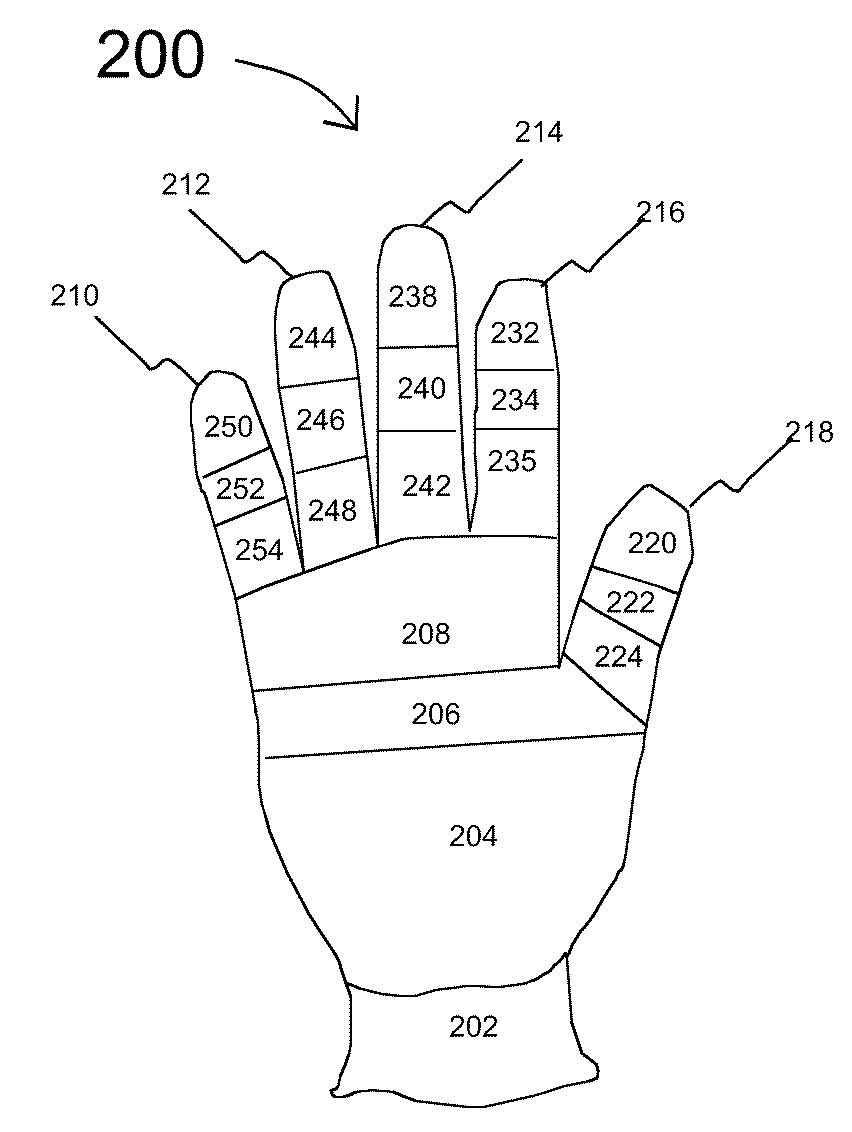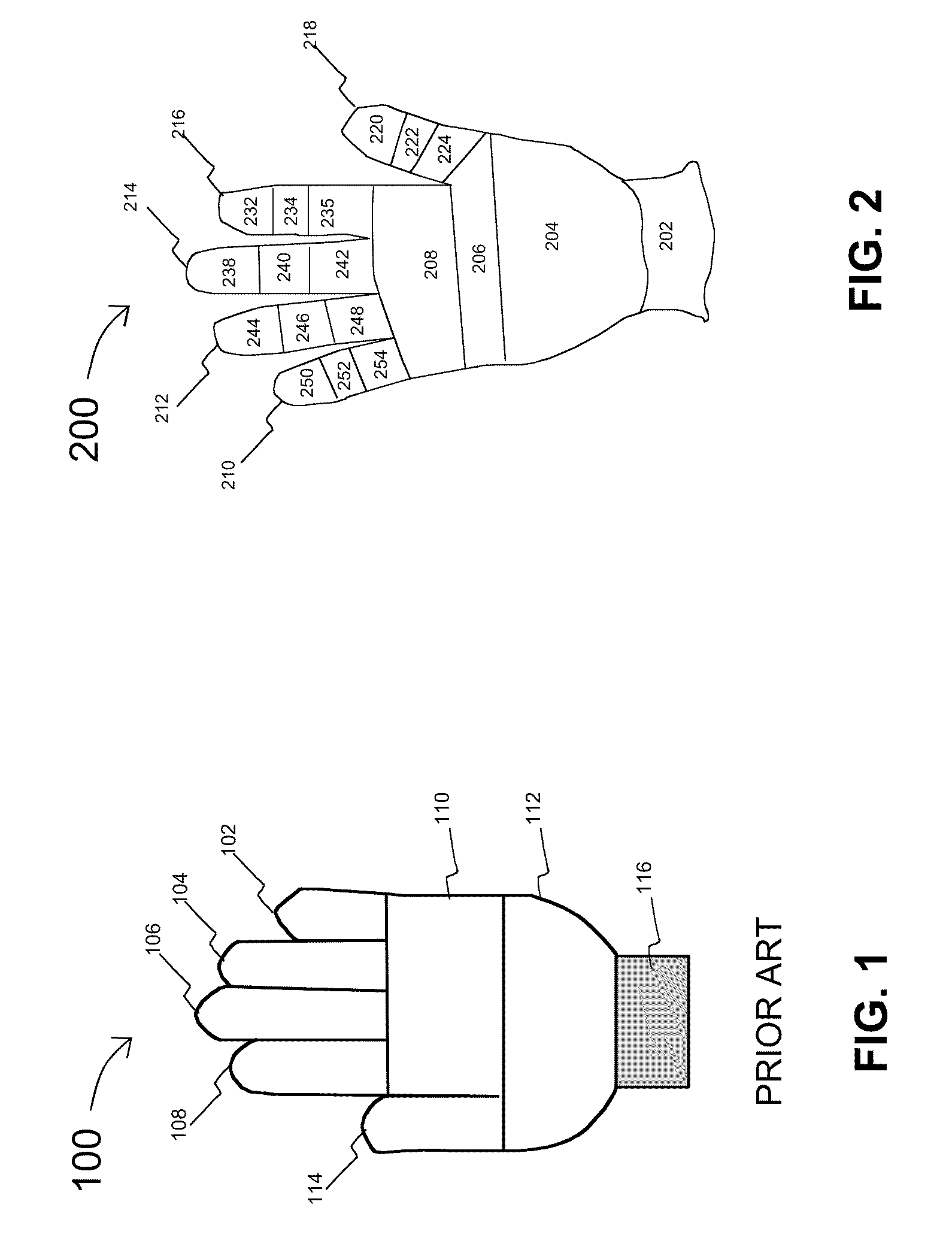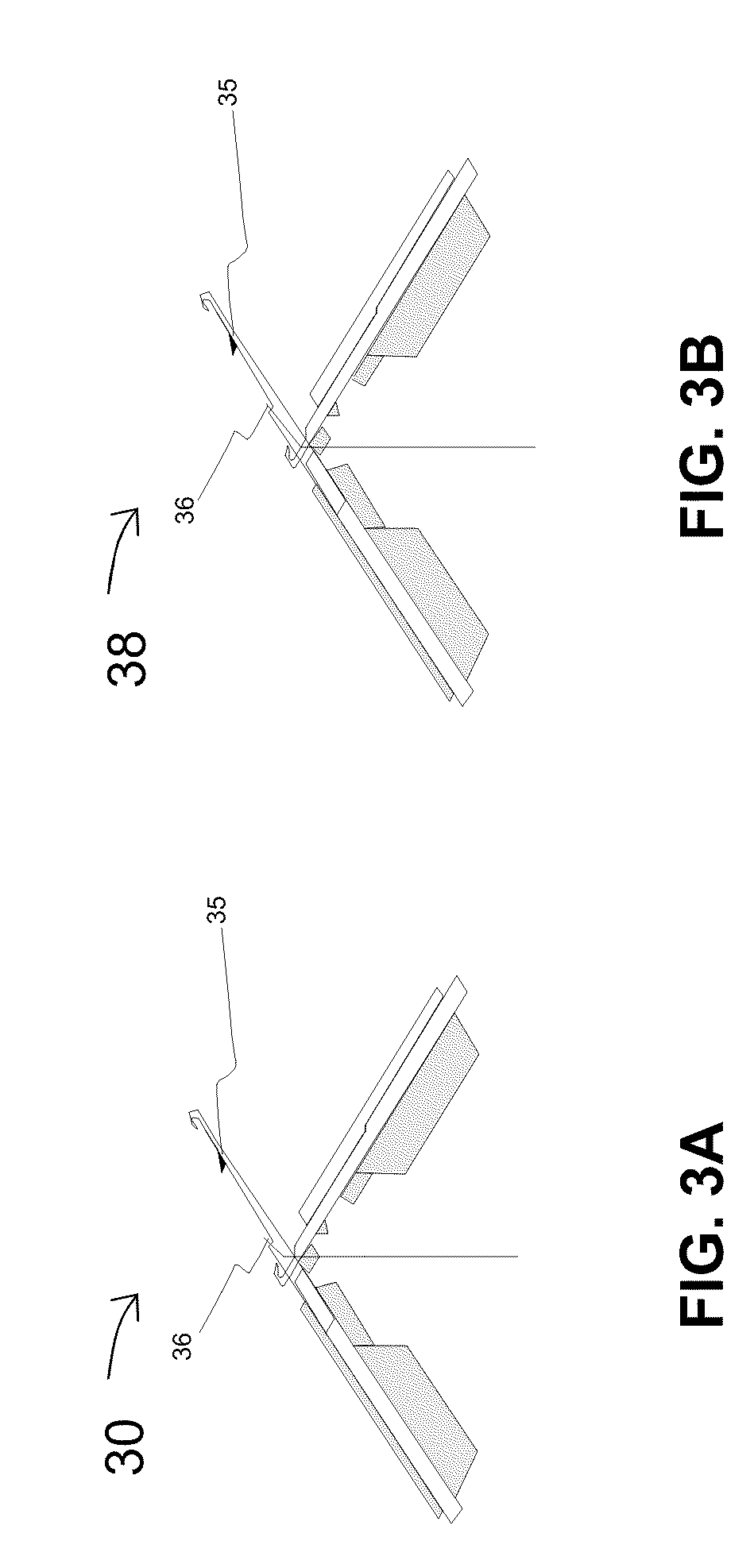Knitted Glove
a glove and knitted technology, applied in the field of knitted gloves, can solve the problems of not revealing a knitted glove or liner, the shape cannot accommodate individual fingers and hands in size and shape, and the denier of a yarn is extremely difficult, so as to achieve tight feel, less stretch, and enhance or reduce the stretch capacity
- Summary
- Abstract
- Description
- Claims
- Application Information
AI Technical Summary
Benefits of technology
Problems solved by technology
Method used
Image
Examples
Embodiment Construction
[0025]The prior art, as shown in FIG. 1, is a glove 100, having eight major glove components. These components include a pinky finger component 102, a ring finger component 104, a middle finger component 106, a forefinger component 108, an upper palm component 110, a lower palm component 112, a thumb component 114, and a wrist component 116. As can be seen in FIG. 1, the shapes of the glove 100 fingers do not taper, nor does the wrist component 116 taper to prevent bagginess and gapping at the wrist. Additionally, the fingers of the glove 100 do not taper near the fingertips.
[0026]Existing flat knitting machines can be programmed to accommodate a large number of changes in stitch dimensions using stitch setup and to alter the physical dimensions used in a standard eight component glove 100 of FIG. 1. Stitch setup can be used to “customize” gloves and liners manufactured in sizes 6, 7, 8, 9, and 10. They also can be used to develop specifications for finger length and width, palm len...
PUM
| Property | Measurement | Unit |
|---|---|---|
| Elastomeric | aaaaa | aaaaa |
| Size | aaaaa | aaaaa |
| Flexibility | aaaaa | aaaaa |
Abstract
Description
Claims
Application Information
 Login to View More
Login to View More - R&D
- Intellectual Property
- Life Sciences
- Materials
- Tech Scout
- Unparalleled Data Quality
- Higher Quality Content
- 60% Fewer Hallucinations
Browse by: Latest US Patents, China's latest patents, Technical Efficacy Thesaurus, Application Domain, Technology Topic, Popular Technical Reports.
© 2025 PatSnap. All rights reserved.Legal|Privacy policy|Modern Slavery Act Transparency Statement|Sitemap|About US| Contact US: help@patsnap.com



